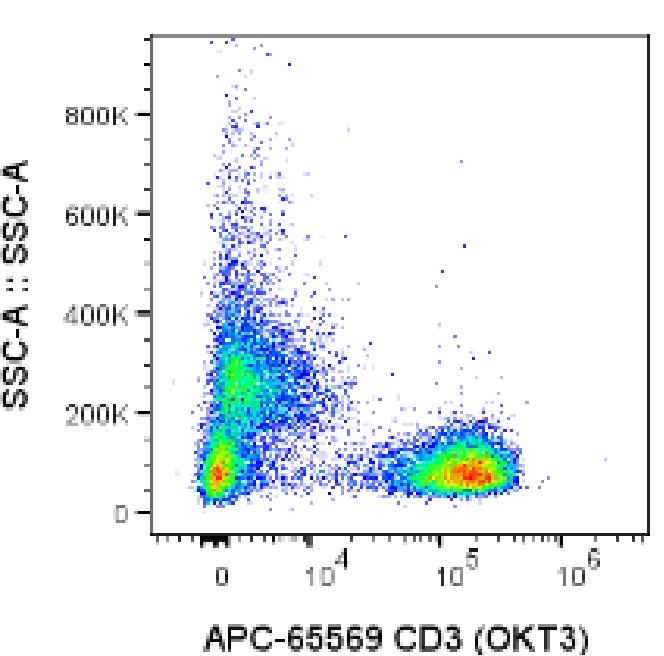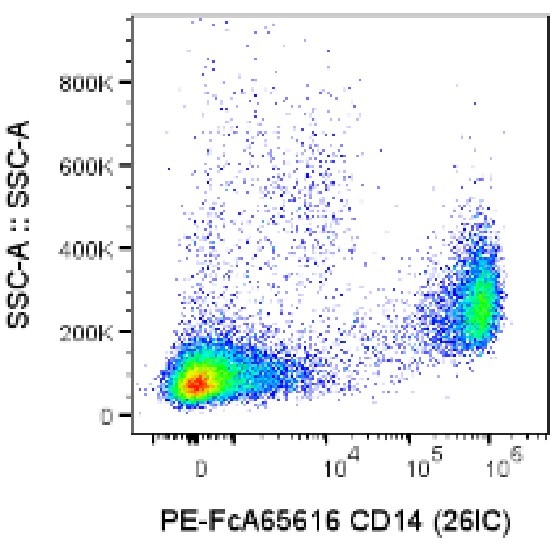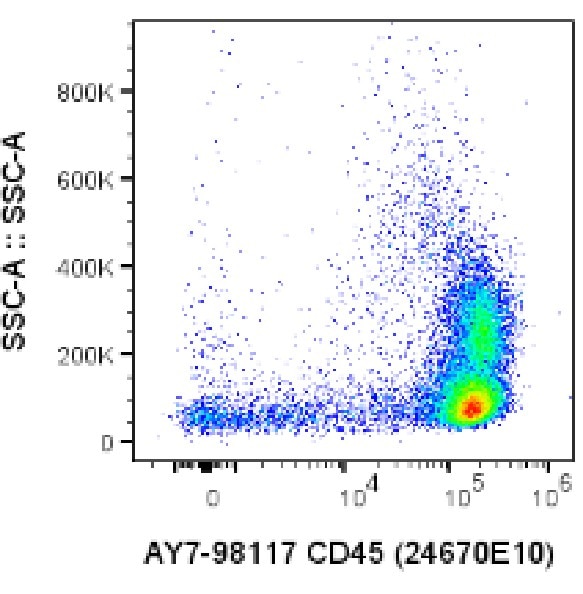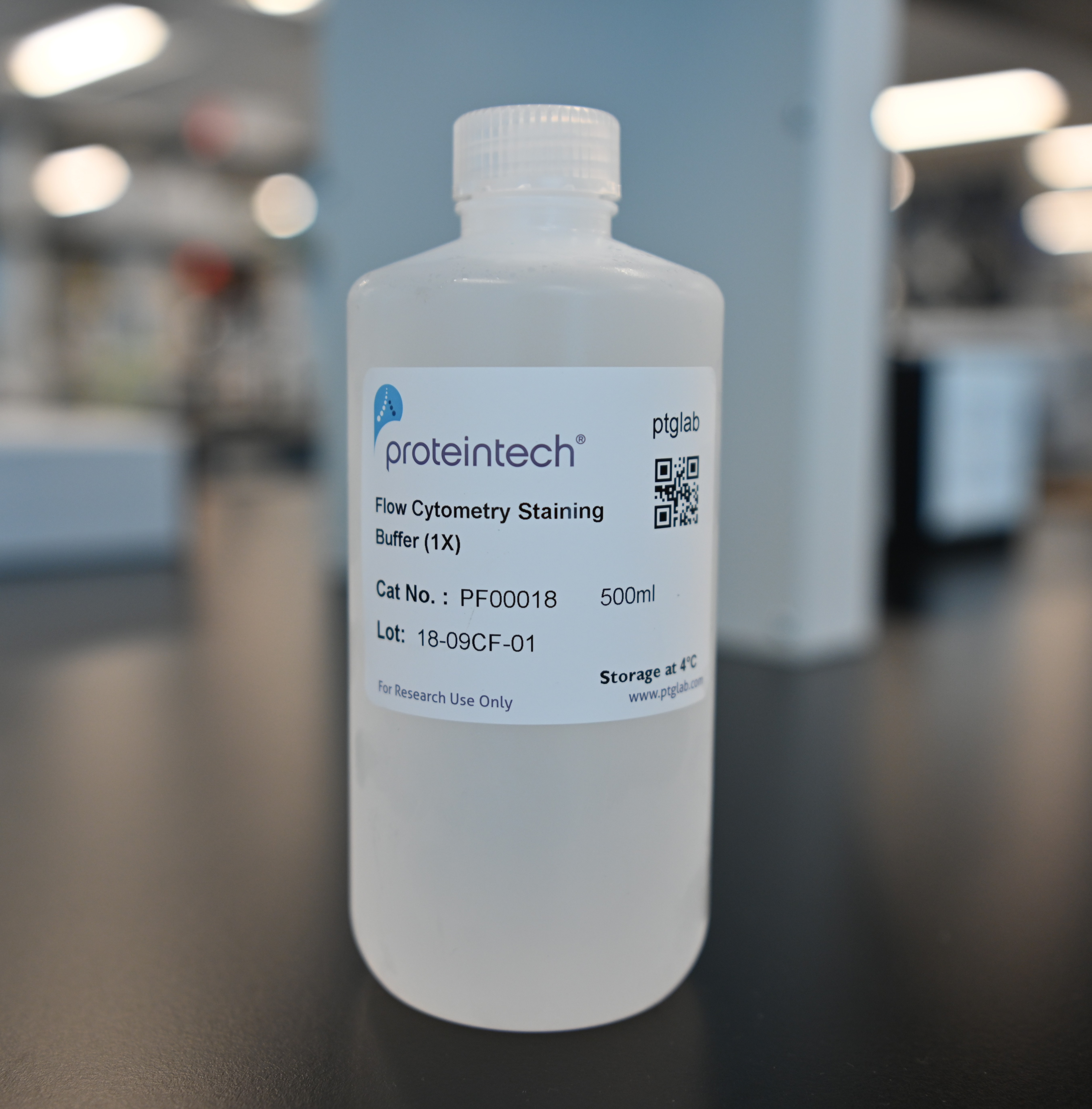Product Information
Proteintech's Flow Cytometry Staining Buffer (1X, #PF00018) is a buffer formulated for use in flow cytometry. It is suitable for all wash and incubation steps required for dilution of antibodies, dilution of cells, and surface staining for flow cytometry analysis. It maximizes the maintenance of cell activity and minimizes non-specific staining. This product is a 1× working solution and is ready to use.
Component | Volume |
Flow Cytometry Staining Buffer (1X) | 500 mL |
Note: This product contains fetal bovine serum and sodium azide (≤0.09%).
Storage
Keep sealed and protected from light at 4°C. Valid for 1 year.
Usage
1. After collecting the cell samples into a flow tube, add Flow Cytometry Staining Buffer to 2 mL and centrifuge at 300-400 g for 5 minutes, then discard the supernatant.
2. Repeat step 1.
3. Add the appropriate amount of Flow Cytometry Staining Buffer as required for the experiment.
4. Dispense the cell samples into each experimental group of flow tubes in the volume and cell concentration required for the experiment.
5. Stain the cell surface antigens at the optimal concentration recommended in the antibody instructions.
6. After staining is complete, add Flow Cytometry Staining Buffer to 2 mL to wash the cells, centrifuge at 300-400 g for 5 minutes, and discard the supernatant.
7. Repeat step 6.
8. Add 0.2 mL Flow Cytometry Staining Buffer and resuspend the cell precipitate in Flow Cytometry Staining Buffer.
9. Collect samples on a Flow Cytometer.
Cautions
This product contains sodium azide and requires personal protective measures when used, such as wearing gloves and lab coats to avoid contact with the eyes or skin.
Cited in Article as
PF00018, Flow Cytometry Staining Buffer (1X), Proteintech, IL, USA
Documentation
| Datasheet |
|---|
| Flow Cytometry Staining Buffer (1X) Datasheet |
Publications
| Application | Title |
|---|---|
Nat Aging Single-cell and spatial RNA sequencing identify divergent microenvironments and progression signatures in early- versus late-onset prostate cancer | |
J Immunother Cancer Hypoxia upregulates the expression of PD-L1 via NPM1 in breast cancer | |
Biochem Pharmacol Targeting HMGA1 contributes to immunotherapy in aggressive breast cancer while suppressing EMT | |
Pharmaceutics The Molecular Chaperone TCP1 Affects Carcinogenicity and Is a Potential Therapeutic Target for Acute Myeloid Leukemia | |
Biochim Biophys Acta Mol Basis Dis A novel transgenic miniature pig model of human PSGL-1 reveals critical roles in thrombosis, inflammation, and immune perturbation | |
Tissue Cell Bromodomain containing 4 inhibition combats gastric precancerous lesions via modulating macrophage polarization |








